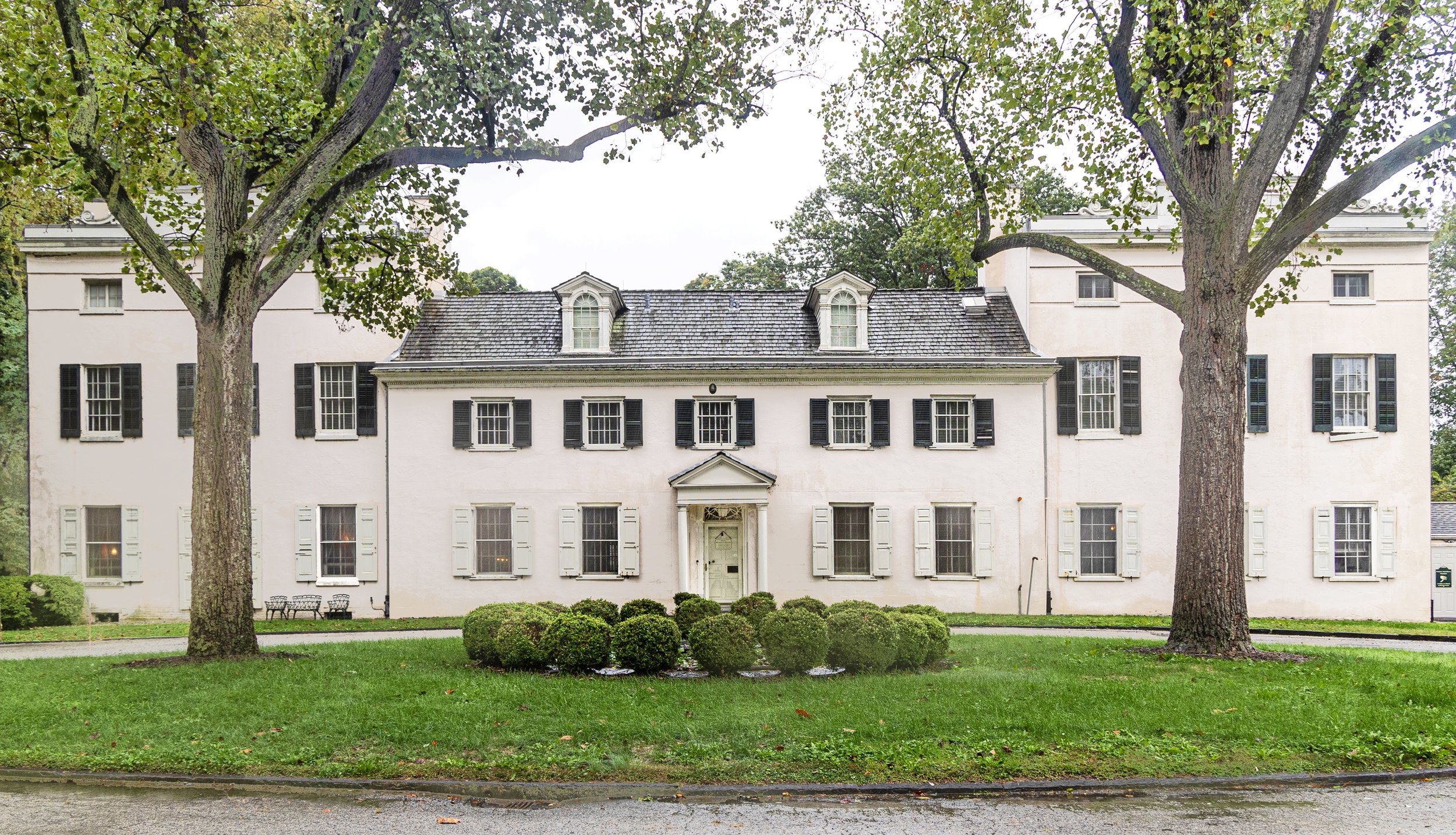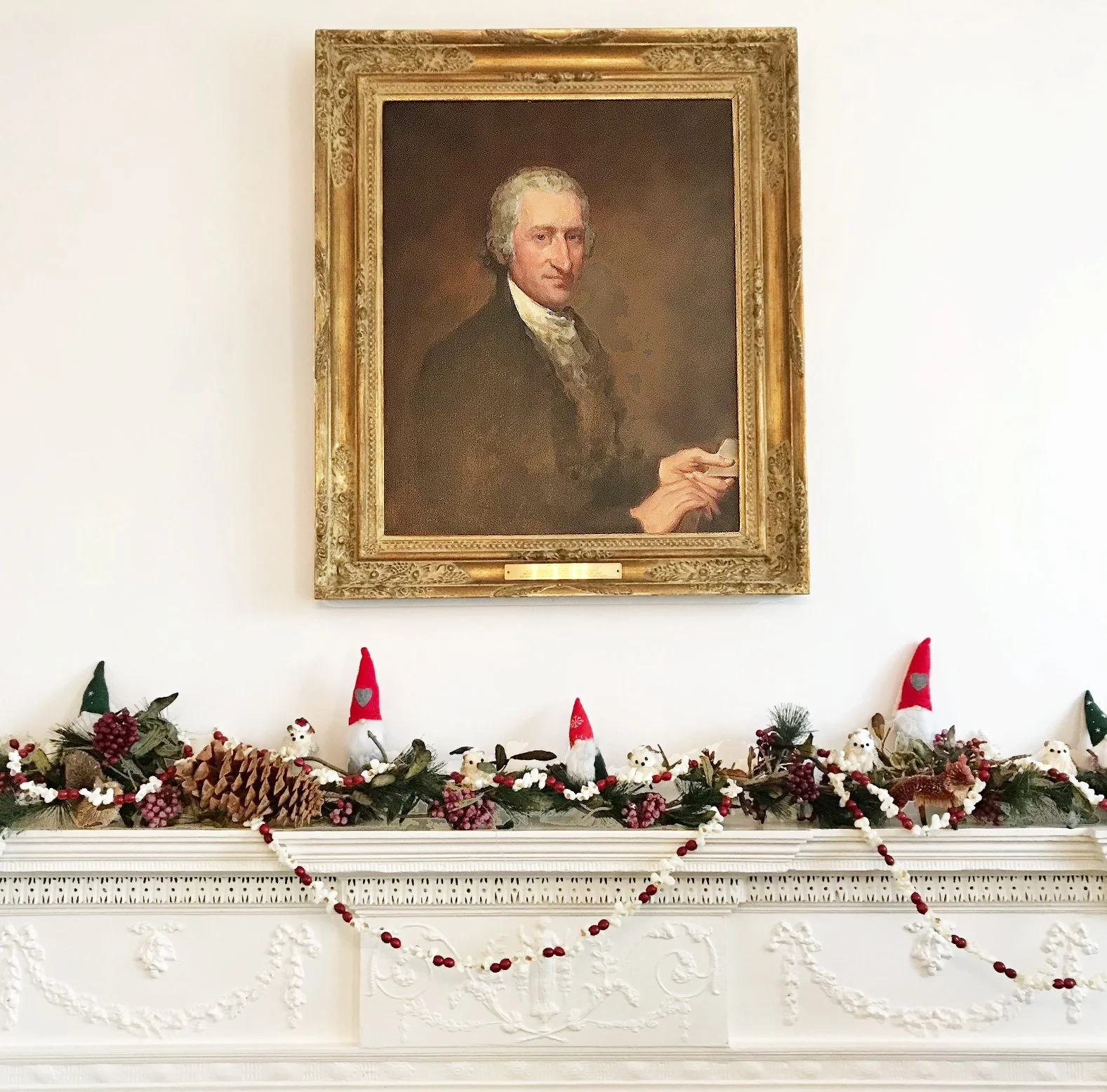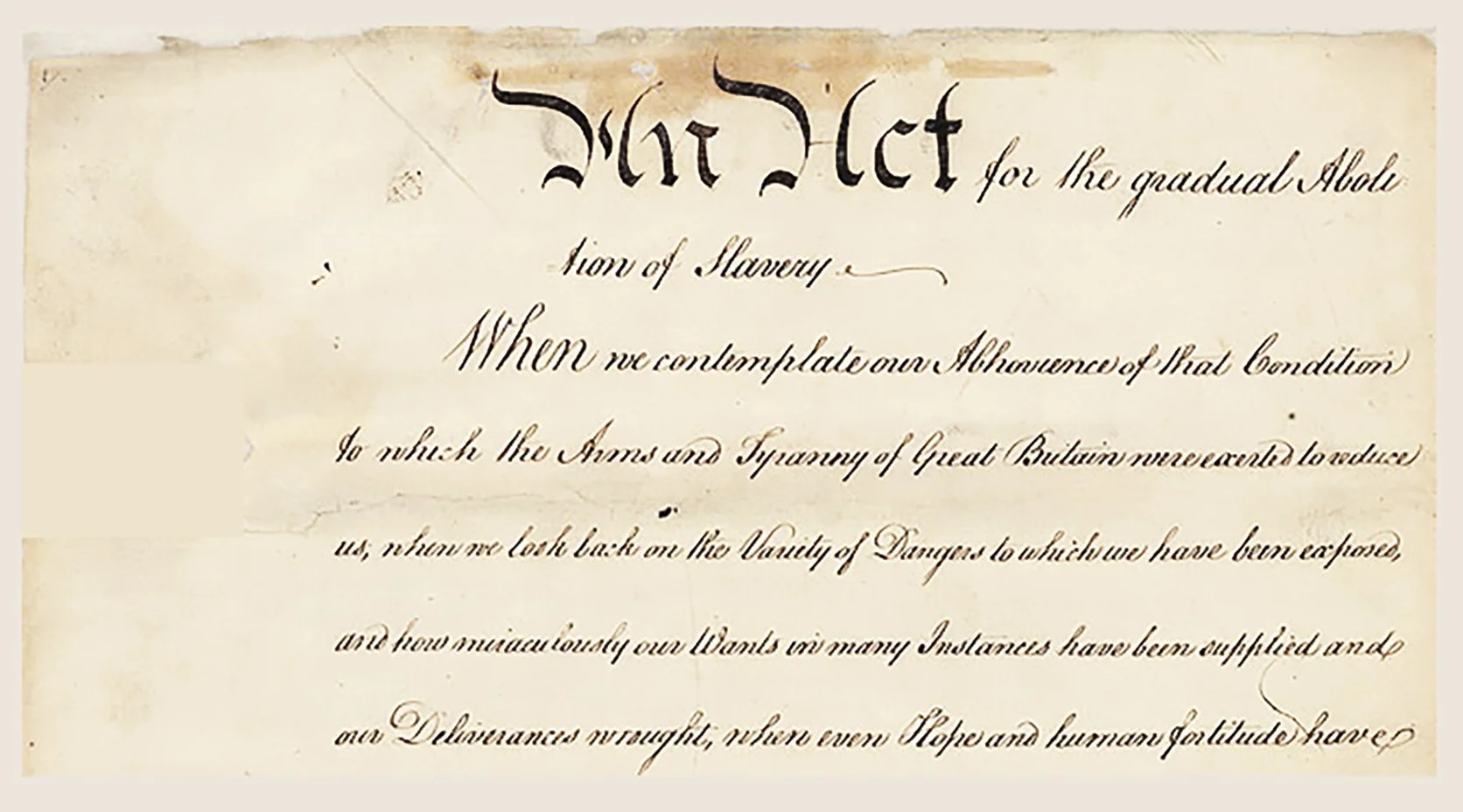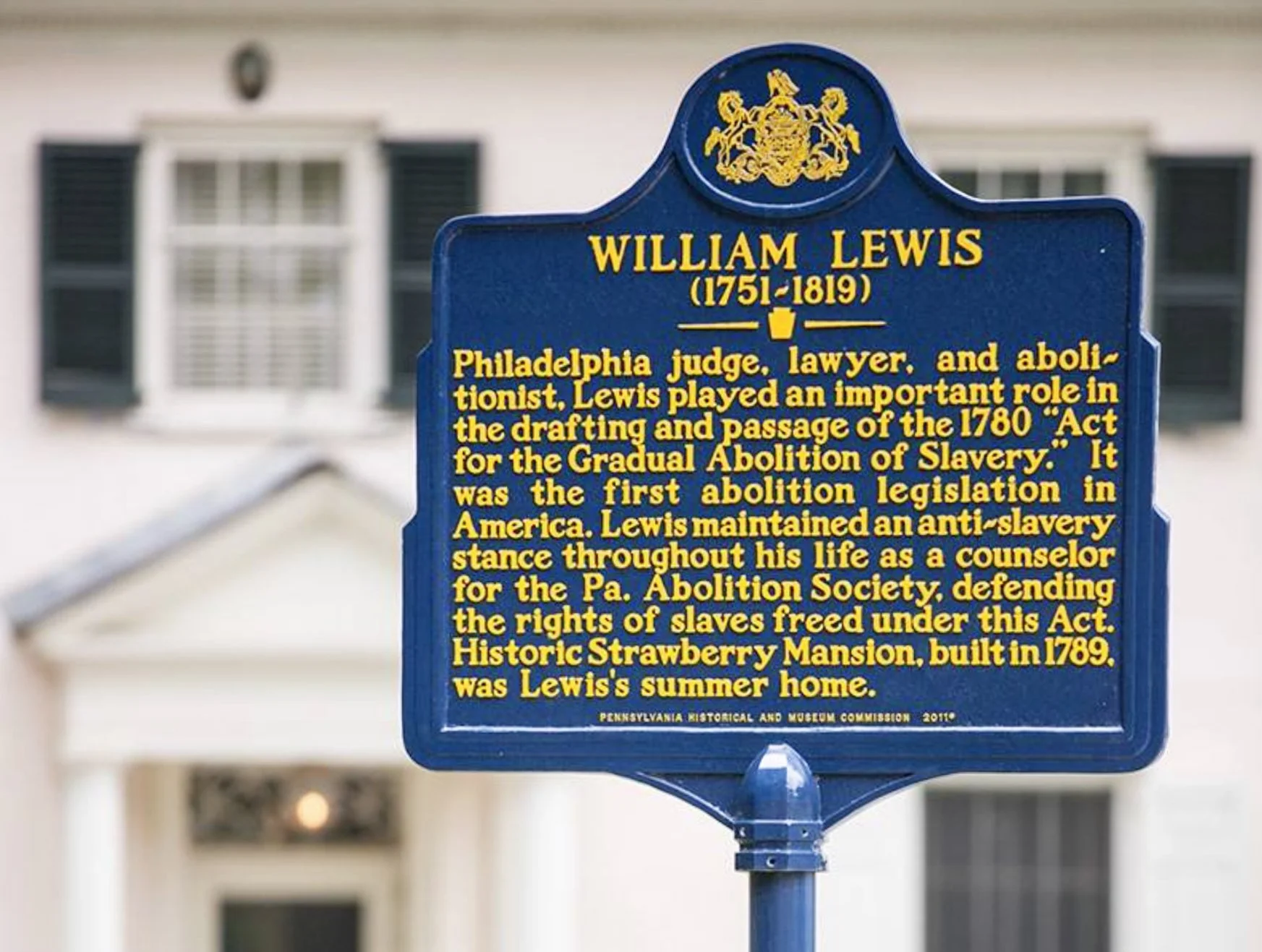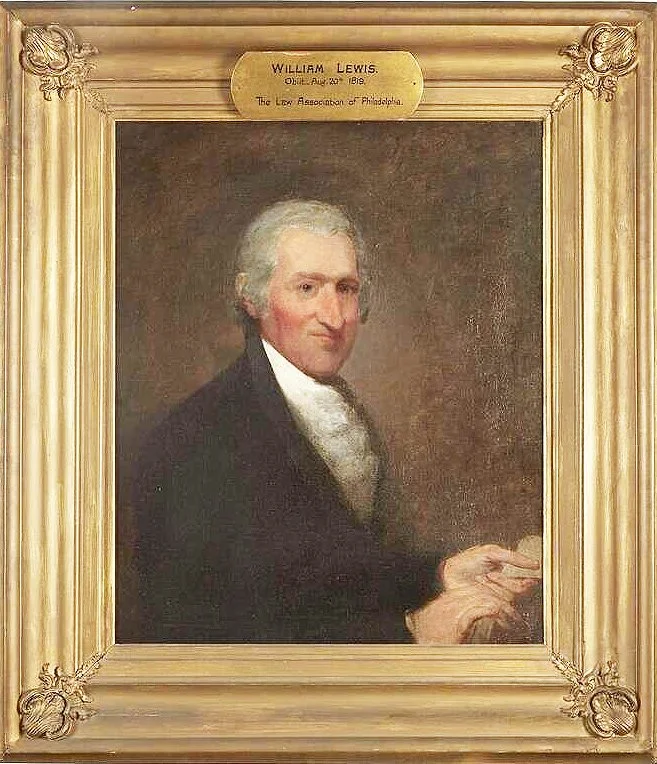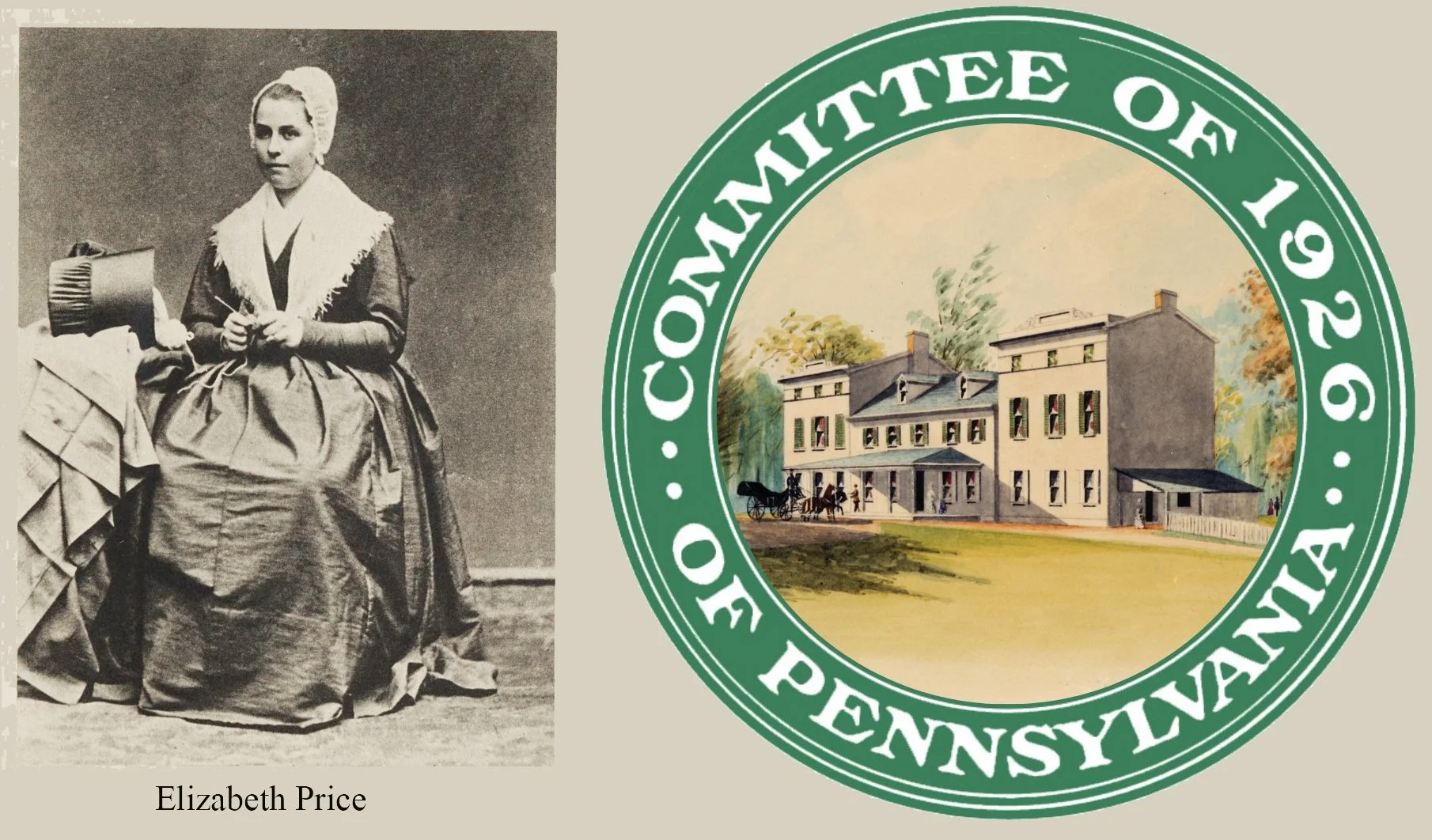Historic Quaker Houses of Philadelphia
Strawberry Mansion.
Built in 1789
By Quaker Lawyer William Lewis
With Flanking Wings Added ca. 1828:
Above: Strawberry Mansion. 2450 Strawberry Mansion Drive, Philadelphia. Image source: Flickr / Billy Wilson.
Strawberry Mansion, located in Fairmount Park, was built in 1789 and ca. 1828. Quaker lawyer William Lewis built the central, five-bay house in the Federal style. The flanking wings were added ca. 1828 in the Greek Revival style by Judge Joseph Hemphill. The Hemphills had been an Anglican family in Delaware County.
Over time, the mansion passed through several prominent families. The house was later renamed for the strawberry festivals held on its grounds. In the 20th century, after years of decline, the house was restored and opened as a public museum by the Committee of 1926, led by civic leader Elizabeth Price Martin.
William Lewis of Strawberry Mansion
Co-Author of the 1780 “Act for the Abolition of Slavery”
The First Anti-Slavery Legislation by a State in the U. S.
Above: Portrait of lawyer William Lewis in the William Lewis Room at Strawberry Mansion. Image source: Historic Strawberry Mansion - Facebook
1780: An Act for the Gradual Abolition of Slavery”
Above: Detail of the1780 “An Act for the Abolition of Slavery” Image source: Pennsylvania State Archives
Lawyer William Lewis, builder and first resident of Strawberry Mansion, played a key role in drafting Pennsylvania’s 1780 “An Act for the Gradual Abolition of Slavery.” This was the first state-level legislation in the U. S. to begin the legal dismantling of slavery. While it did not immediately free those already enslaved, the law prohibited the further importation of slaves. It declared that children born to enslaved mothers after the law's passage would be freed at age 28.
This gradual approach reflected political compromise, but it marked a significant turning point. This was the first time a government in the U. S. took formal legal action to end slavery.
William Lewis is widely credited with helping draft the language of the act and advising on its legal structure. He drew on both his legal training and his Quaker belief in equality to ensure the act would withstand legal challenges. For many years he served as counsel for the Pennsylvania Society for the Abolition of Slavery.
The William Lewis Room in Strawberry Mansion:
Above: The William Lewis Room in Strawberry Mansion. A portrait of Lewis hangs over the fireplace. The portrait is by John Neagle after a Gilbert Stuart painting. (See below) Image source: HistoricStrawberryMansion.org
A Historical Marker for William Lewis
At Strawberry Mansion:
Image source: Historic Strawberry Mansion - Facebook
Lawyer William Lewis of Strawberry Hill
Defender of Anti-War Conscientious Objectors
During the Revolutionary War:
Above: William Lewis of Strawberry Hill. Image source: Freeman’s / Hindman
During the Revolutionary War, Quaker lawyer William Lewis became known for defending conscientious objectors, especially fellow Quakers. Those anti-war advocates refused to take up arms or support the Continental Army. These individuals were motivated by religious pacifism. But they were often accused of treason or disloyalty by revolutionary authorities.
Lewis argued that such refusals were grounded in conscience, not in support for the British. His defenses laid the groundwork for legal recognition of religious objection and the rights of conscience in wartime. He personally supported independence, but he believed that those acting on sincere religious conviction should not be punished as traitors.
His arguments contributed to an important legacy: the legal concept of conscientious objection. Historians credit him with influencing the protections later written into American law for individuals opposed to military service on religious or moral grounds.
Elizabeth Price Martin and the Committee of 1926
Leading the Preservation of Strawberry Mansion
as a Public Museum:
Above: A young Elizabeth Price wears traditional Quaker clothing in this portrait. She later became Episcopalian. Elizabeth was the first chairperson of the Committee of 1926, a group of women who restored Strawberry Mansion.
Images source. Left: Strawberry Mansion, by Sarah Dickson Lowrie, Internet Archive. Right: Historic Strawberry Mansion - Facebook.
Elizabeth Price Martin was a Philadelphia civic leader who played a central role in preserving Strawberry Mansion. She was the first chairperson of the Committee of 1926, a group of women who restored this historic house. Elizabeth organized the transformation of the house into a public museum. She supervised renovations, acquired historical furnishings, and developed educational programs. Her work ensured that Strawberry Mansion would be preserved as a civic landmark accessible to the public.
Elizabeth was raised in a devout Quaker family. She was a granddaughter of noted Quaker lawyer Eli K. Price. He was instrumental in the creation of Fairmount Park, where Strawberry Mansion is located today.
Links:

